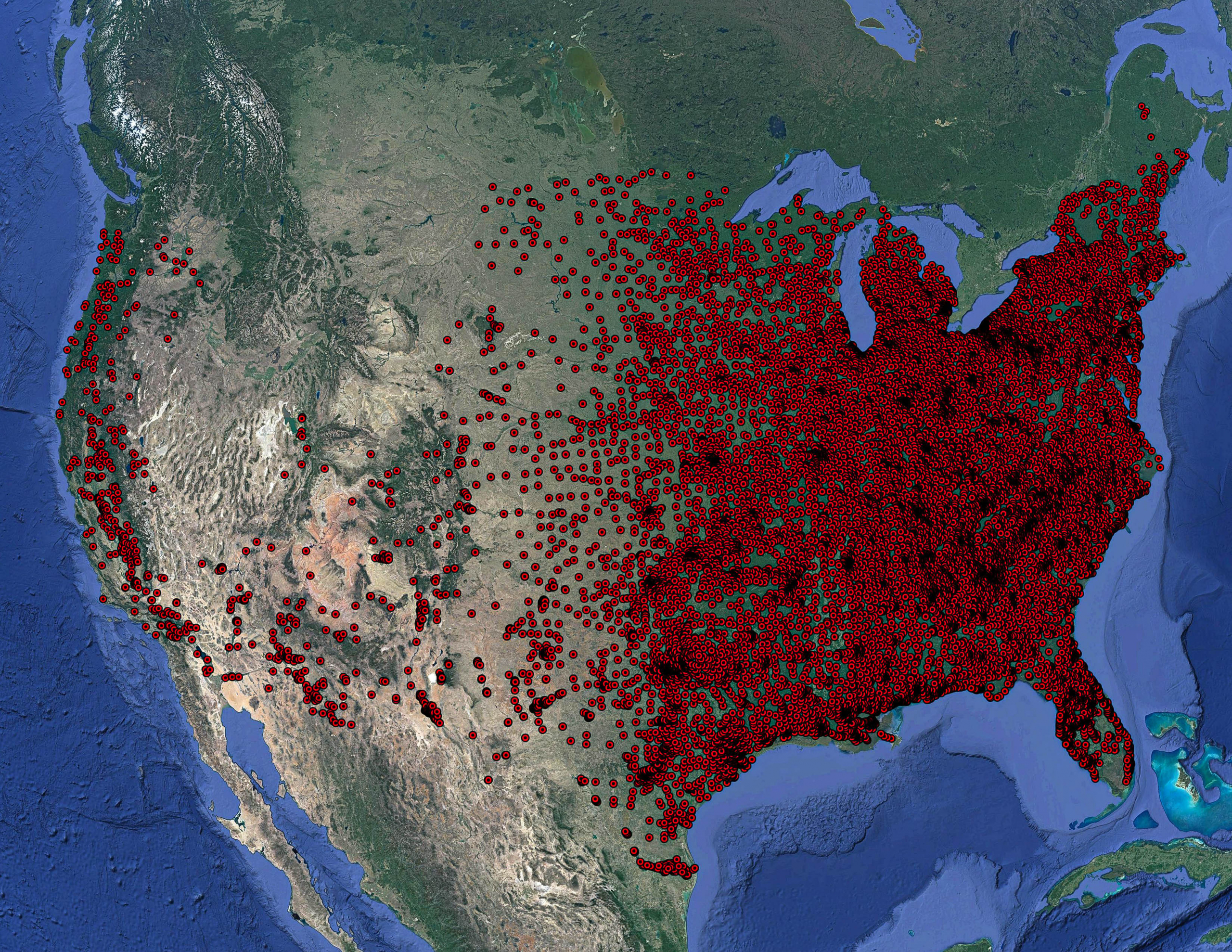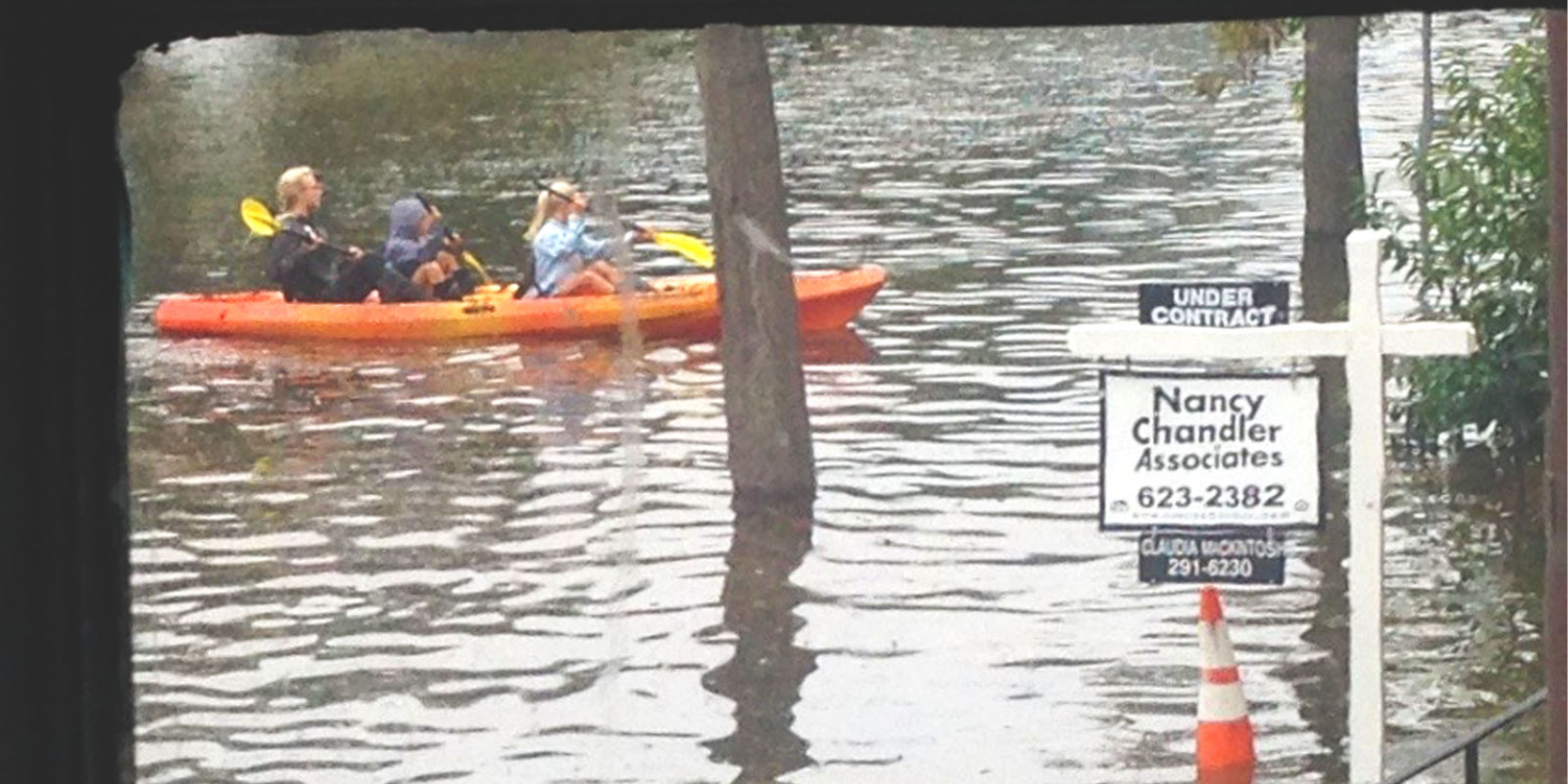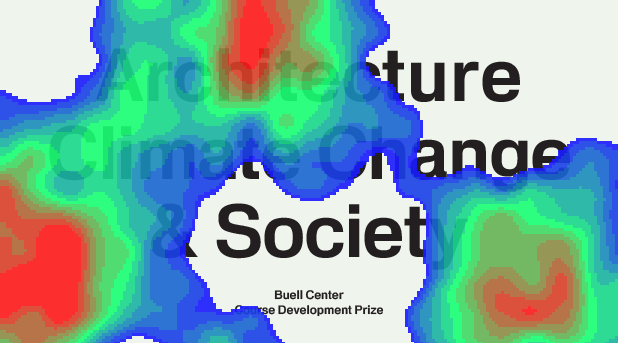2024 Course Development Prize in Architecture, Climate Change, and Society
OVERVIEW
Education in architecture and urbanism is well positioned creatively and critically to address the exigencies of climate change. However, pedagogical methods that prioritize immediate applicability can come at the expense of teaching and research that explore the sociocultural and ecopolitical dimensions of the crisis. This, in turn, ultimately limits the range of approaches addressing climate change in professional practice. Columbia University’s Temple Hoyne Buell Center for the Study of American Architecture is therefore issuing, together with the Association of Collegiate Schools of Architecture, a competitive call for course proposals on the theme of “Architecture, Climate Change, and Society.”
From history seminars to visual studies and from design studios to building technologies, the wide variety of course offerings at schools of architecture is a testament to the diversity of perspectives, skills, and tools that ultimately comprise quality work in the field. In contrast, the urgency of the unfolding climate crisis—especially as it intersects with calls for environmental and racial justice—can seem to demand a singular focus that is antithetical to humanities-based critical inquiry or to longer-term creative and technical endeavors. We seek the kind of realism, however, that redefines problems and leaves room for the imagination. Successful proposals for this Course Development Prize in Architecture, Climate Change, and Society will include methods and themes that innovate within their institutional setting—asking hard questions of students that are equal in weight to the hard questions being asked of society in the midst of a global pandemic as it continues to grapple with the intertwined causes and effects of climate change.
This prize was begun as part of a Buell Center project entitled “Power: Infrastructure in America,” which sought critically to understand the intersections of climate, infrastructure, and architecture. It is being continued in conversation with ongoing research on "Architecture and Land in and out of the Americas." This plural, Americas, helps decenter the concept of "American Architecture" in two ways: by connecting building practices across the Western Hemisphere, and by recognizing that there are several Americas within the United States. It is in this spirit that the prize aims to contribute to the development of intersectional pedagogy on the theme of “Architecture, Climate Change, and Society” in the Americas today.
2024 WINNER
Climate | Material | Shelter
Elizabeth Golden & Marc Neveu, University of Washington & Arizona State University
(Image: Students making compressed earth blocks in Scottsdale, AZ)
Maricopa County is one of the fastest growing metropolitan regions in the United States. It is also an area facing the distinct prospect of becoming uninhabitable by the end of this century due to extreme heat. As populations and global temperatures increase, sustainable solutions for housing are becoming ever more critical. This is made even more urgent as international manufacturing and supply chains continue to be disrupted and fuel prices reach record levels. In contrast to the ubiquitous stick frame construction in the region, earthen structures provide a buffer against outdoor temperature fluctuations; earth’s capacity to absorb, store, and radiate heat tempers indoor ambient environments. Early inhabitants, such as the Ancestral Sonoran Desert People, and later Spanish missionaries, relied on these properties to shelter from the harsh climate of the Sonoran Desert.
The course will advance the University of Washington and Arizona State University’s mission to leverage place, enable student success, and transform society through use-inspired research. Students and faculty from both programs at the University of Washington and Arizona State University will collaborate through in-person visits and virtual meetings and reviews. This proposal is the first of a multi-year, research studio that will explore how earth-based construction (compressed earth block) might be leveraged for sustainable urban development (housing) in the Phoenix metropolitan region. Each year the studio is offered will be organized according to scale – the scale of a wall, the scale of a family, and the scale of a community. Year one will include material testing; Year two will incorporate construction faculty and students; and in Year three students will work with Real Estate faculty and students to develop an economic model in parallel with an architectural proposal. Knowledge and data will be cumulative, with each studio learning and building from the previous year’s investigations.
HONORABLE MENTIONS
Demystifying Ecological Thinking in Architecture
Ehsan Sheikholharam, Kennesaw State University
[Image Credit: Children playing at the Arcadia, Education Project by Saif Ul Haque Sthapati, Bangladesh. Aga Khan Trust for Culture / Sandro di Carlo Darsa (photographer)]
What critical tools do architects have to distinguish equitable and environmentally-just developments from greenwashing? How to shield our practices from the interests of Big Tech, Big Oil, and Big Development in making us believe that smart cities and other technocratic utopias are all good, without also turning into cynics or technophobes? How might architects—whose principal vocation is to build—reconcile with ecologists’ call for degrowth? This upper-level, interdisciplinary seminar offers theoretical grounds for rethinking ecological architecture. The course offers diverse critical perspectives on the ambiguities of green development, the place of human agency in altering Earth’s processes, and the possibility of infinite growth.
The syllabus revolves around three sections: the myth of return, the myth of control, and the myth of (liberal) democracy. The course begins by questioning romanticized visions of an idyllic, preindustrial past. Instead, we explore diverse civilizational genealogies and mythologies on the relationship between the human animal and its environment. The next section highlights the connection between the desire for subjugation, hypermasculinity, coloniality, and privatization. The final cluster underlines the tension between the collective needs of the planet and its precarious inhabitants—whether subaltern communities, climate refugees, or endangered species—with identity-based demands for recognition and rights.
Local Repair Ecologies
Cynthia Deng & Lucas Hoops, Tecnológico de Monterrey, Querétaro campus
(Image: Secondhand tools for sale at a tianguis market.)
Lifting up alternatives to linear “take, make, use, waste” models of growth, this course expands on the idea that regions and neighborhoods have distinctive ‘repair ecologies’ (as coined by scholar Steven Jackson) or local systems of repair, improvisation, and material recirculation. In the case of Querétaro, existing everyday practices are sites of possibility and distributed creativity: roving metal collector trucks, swap groups, material banks, street markets, mutual aid networks, repair clubs, archipelagos of urban gardens, marches for water rights… Might architects and designers recognize these circularity and solidarity practices as signals of a future to come, growing through the cracks in current extractive economic regimes?
Working alongside organizers of various repair networks and community-led initiatives, this interdisciplinary course explores the possibilities of repair as a point of creative departure and builds an open-source atlas of local repair ecologies. Here, ‘repair’ does not seek to restore past conditions, but adapts to future ones — it is a transformative act of care that ranges from mending things and spaces to reparations and ecological repair. In the research seminar students begin with fieldwork, dialogue, drawing, and mapping. We try to make visible the political and social relationships, the spaces, and the material flows that define Querétaro’s distinctive repair ecologies. The studio then asks how architecture can participate in and build on-within-among these intertwined networks of collective care throughout the city, toward reparative futures and new economies.
Download the Winning Course
Collective Comfort II
Liz Gálvez, University of California, Berkeley
(Image Credit: Cité Climatisée, from Air Architecture, 1961, Yves Klein. Drawing for a city protected by a wall of air and inhabitants welcoming an immaterial world.)
American desert cities designed and built at the turn of the century, in collaboration with the advent of air-conditioning technologies, have been able to house millions of Americans by relying primarily on fossil-fuels to supply relief from extreme hot weather. The Phoenix Metro Area, or The Valley of The Sun as it is known to locals, experienced 145 days reaching temperatures over 100˚F in 2020 according to the National Weather Service. In July of 2023, Phoenix set a new record with 31 days strait of over 110-degree heat. The increased probability of a longer-lasting heat-wave, combined with the over demand of electrical power supply during extreme weather events can be catastrophic, especially to the most vulnerable communities. Today, municipal government, local communities, and grass roots organizations, coupled with environmental researchers in the Phoenix Metro Area have taken note of the risks that heat poses to human livelihoods and are working to develop cooling centers as strategy to deal with heat insecurity.
To address equitable-cooling in relationship with an over-reliance on private mechanical, electrically powered air-conditioning technologies, the course sequence aims to develop a public program that re-thinks the cooling center through the combined re-creation of new social dynamics and new environmentalisms that foreground community resilience through collectivity in desert cities. Working collaboratively with design and building science faculty, students will explore the gap between architectural and environmental thinking to develop conceptual, critical, and evocative, yet possible building proposals that address collective comfort.





































